A pontoon boat is a wide, rectangular barge primarily for movies passengers and cargo. It uses pontoons to float. These pontoons, which are hollow aluminum tubes, use buoyancy to keep the boat well above water. Pontoon boats don’t go very fast and have padded seats.
This seating section is frequently fenced in, and the boat has a shallow draft often less than 10 inches. (The draft is the part of the hull that’s underwater.) But what are the different types of pontoon boats and how can you tell them apart? Let’s find out what’s on the market!
Types of Pontoon Boats
1. Fishing Pontoon Boats
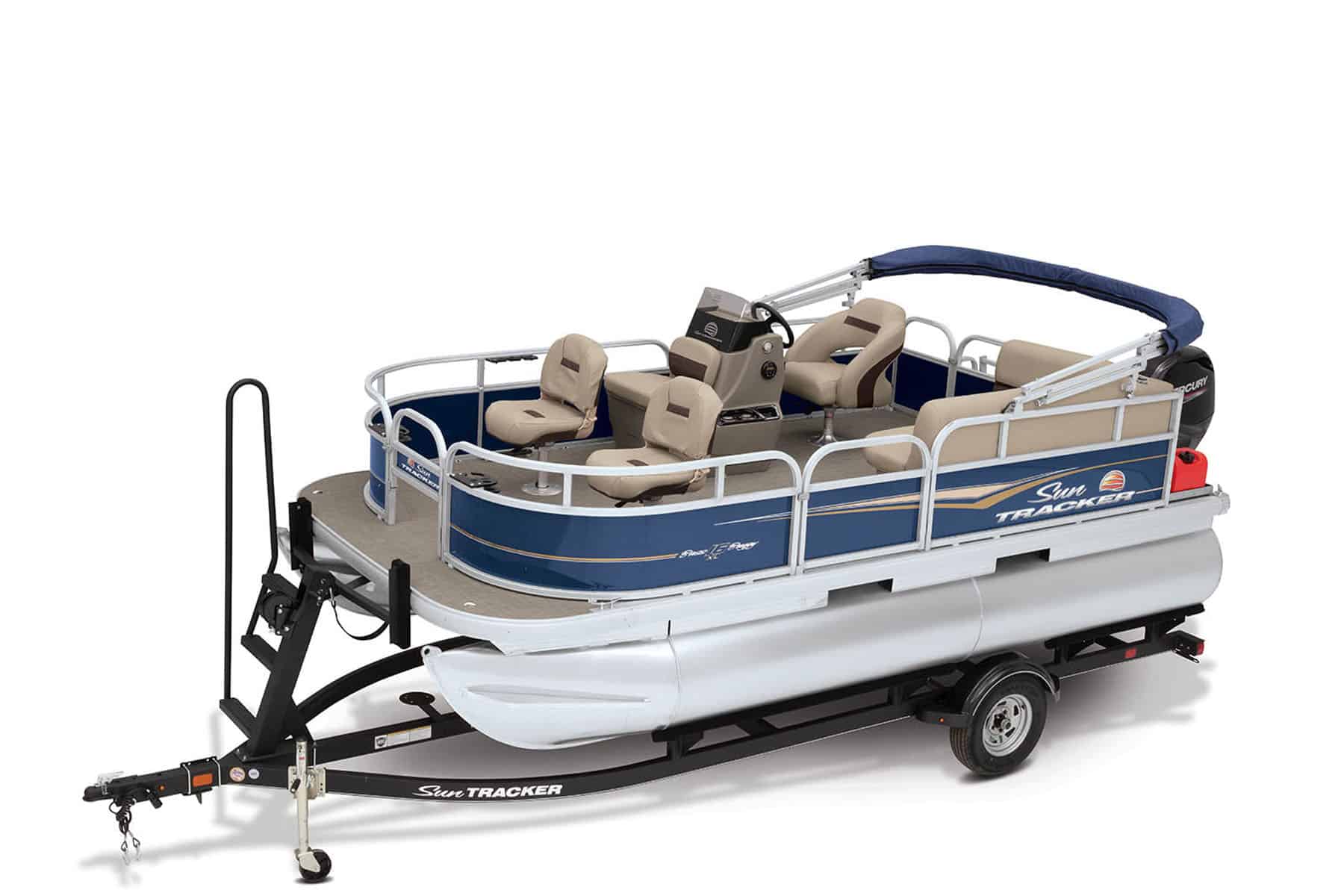
For commercial fishing, trawlers are your top choice. But if you’re an angling amateur that’s more into recreational water hunting, you could opt for a fishing pontoon boat. It won’t have as many seats as a pleasure pontoon – you need more open floor space to prepare your catch.
Fishing platoons can be fitted with specific technology features, including fishfinders and sensors. You can add hardware too, with livewells, rod holders, and storage lockers. A fishing pontoon is likely to have front-facing chairs at the bow. Install swivel seats for convenience.
2. Bar Pontoon Boats
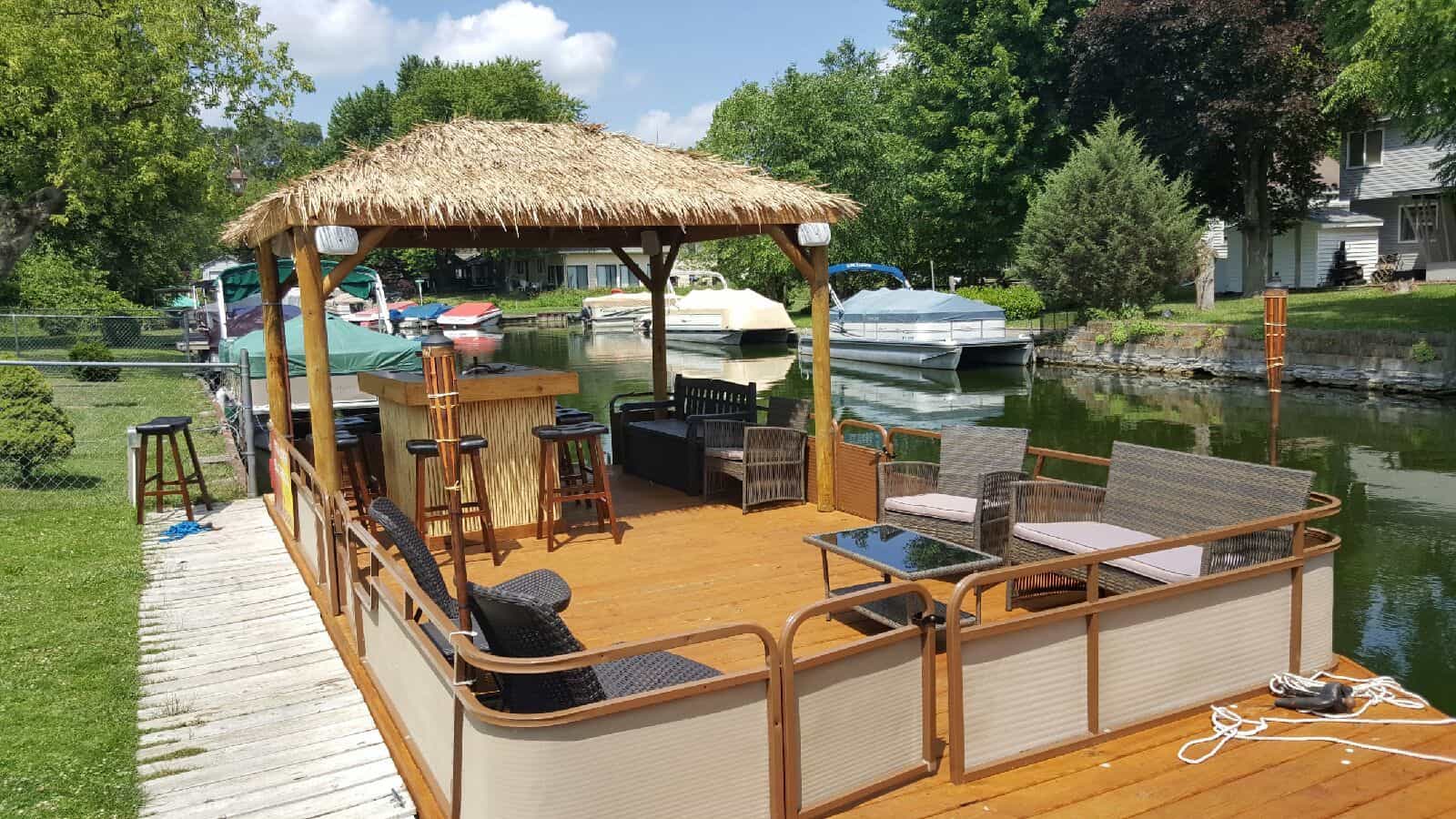
Sometimes referred to as party barges, bar pontoon boats are all about socializing and celebration. They’re typically fitted with a wet bar, ice boxes, fridges, and barbeque set-ups. The boat might have night lights (and bug zappers) so you can keep celebrating after dark.
The primary fixtures on party barges include sound systems, flat screens, and safety gear. You may need an onboard nurse for particularly rabid revelry, but at least make sure you have a sickbay and a comprehensive first aid kit. And don’t forget that liquor license!
3. Twin Tube Pontoon Boats
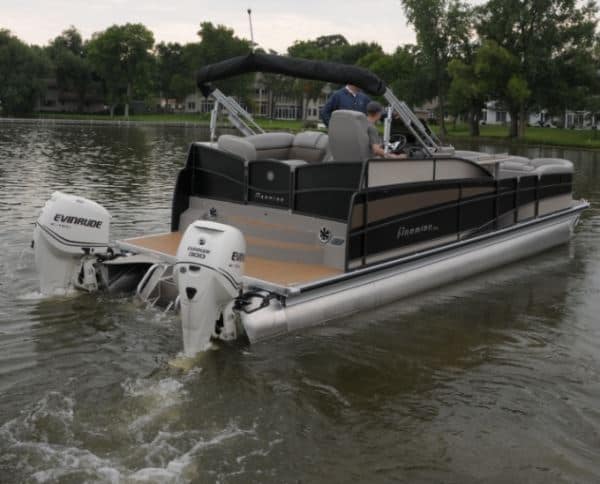
Most pontoon boats have two pontoon tubes. These logs form a hollow hull that holds up the deck. And because the boat is rarely more than 10 inches underwater, these pontoons are considered planing boats. The tubes are linked by a flat platform with furniture and fittings.
The layout of a typical pontoon boat relies on balance. Most of the materials are lightweight, and they’re strategically placed to avoid banking or pitching. The boat might have removable covers in case of rain or bad weather. The boat could have a single-engine or twin motors.
4. Triple Tube Pontoon Boats
For maximum power, go for a triple tube pontoon boat, sometimes called a tritoon. They have three hollow logs supporting the deck. If the hull has a single-engine, the engine is likely to be housed inside the central tube. But some tritoons have a separate engine for each log.
Triple tube pontoons have better balance, enhanced buoyancy, more efficient planing, and a shallower draft than regular pontoon boats. They’re easier to handle and achieve immense speeds. But you’ll need extra shock absorption for those intensely bumpy high-speed rides.
5. Quad Seating Pontoon Boats
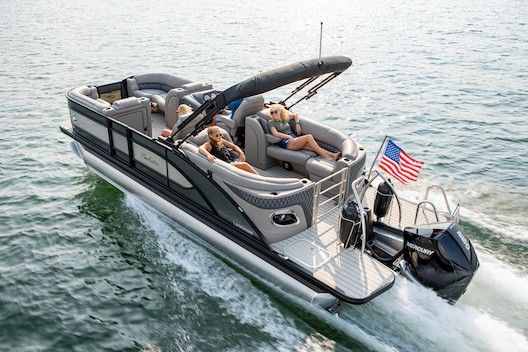
Why lounge in the backyard when you can do it in a boat? Quad seating pontoon boats have two seats at the bow and two more at the stern. And these are luxuriant recliners that let you while the day away on open water. Pontoon boats love skinny water – only a foot or so deep.
So you can float your pontoon boat in anything from suburban docks to shallow bays. You can even anchor the boat close enough to run into your neighbor’s kitchen for snacks and refills. These boats often have a walkway between the rows of seats, with a gate at each end.
6. Watersport Pontoon Boats
Traditionally, pontoon boats were slow, lumbering vehicles. But these days, they can get quite fast and agile. Still, if you want a watersport pontoon boat, it needs enough engine power to safely pull a water skier or wakeboarder. That’s your biggest buying consideration.
This pontoon boat needs towing masts sturdy enough to support skiers and surfers without messing with the balance of the boat. And you need storage space for kites, surfboards, wakeboards, and gear. It helps to have an open back or ladder for mounting and disembarking.
7. Rear Lounge Pontoon Boats
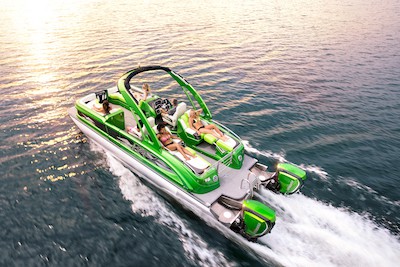
If you’re buying a pontoon boat for leisure and pleasure, the views are really important. And because pontoon boats are tricky to turn, it helps if your seating area faces the right direction from the start. Particularly if you’re sailing in skinny waters that are only a foot or two deep.
Rear lounge pontoon boats focus the front of the boat on control and seamanship while the back is left for lounging. You might have a small fishing chair at the bow, but the bulk of the seating space is at the back. Install luxurious recliners, daybeds, or sofas for sheer relaxation.
8. Inflatable Pontoon Boats
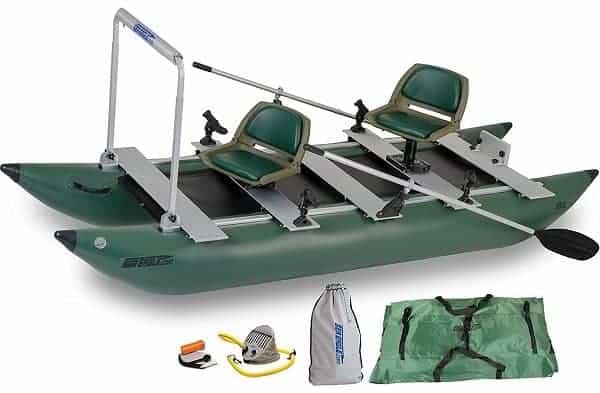
If you’re the type that enjoys floating along the river in a tire tube, you might be willing to upgrade to a designated float tube. They’re shaped like inflatable armchairs, ideal for lounging in the pool as you watch your favorite sport. They also work for light fishing.
But if you want to go farther out, try these inflatable pontoon boats. They’re built for one or two users and have oars clipped to the sides. The boat has space for your tackle box and other fishing gear. The chairs are ergonomically designed for hours of comfortable fishing.
9. Family Pontoon Boats
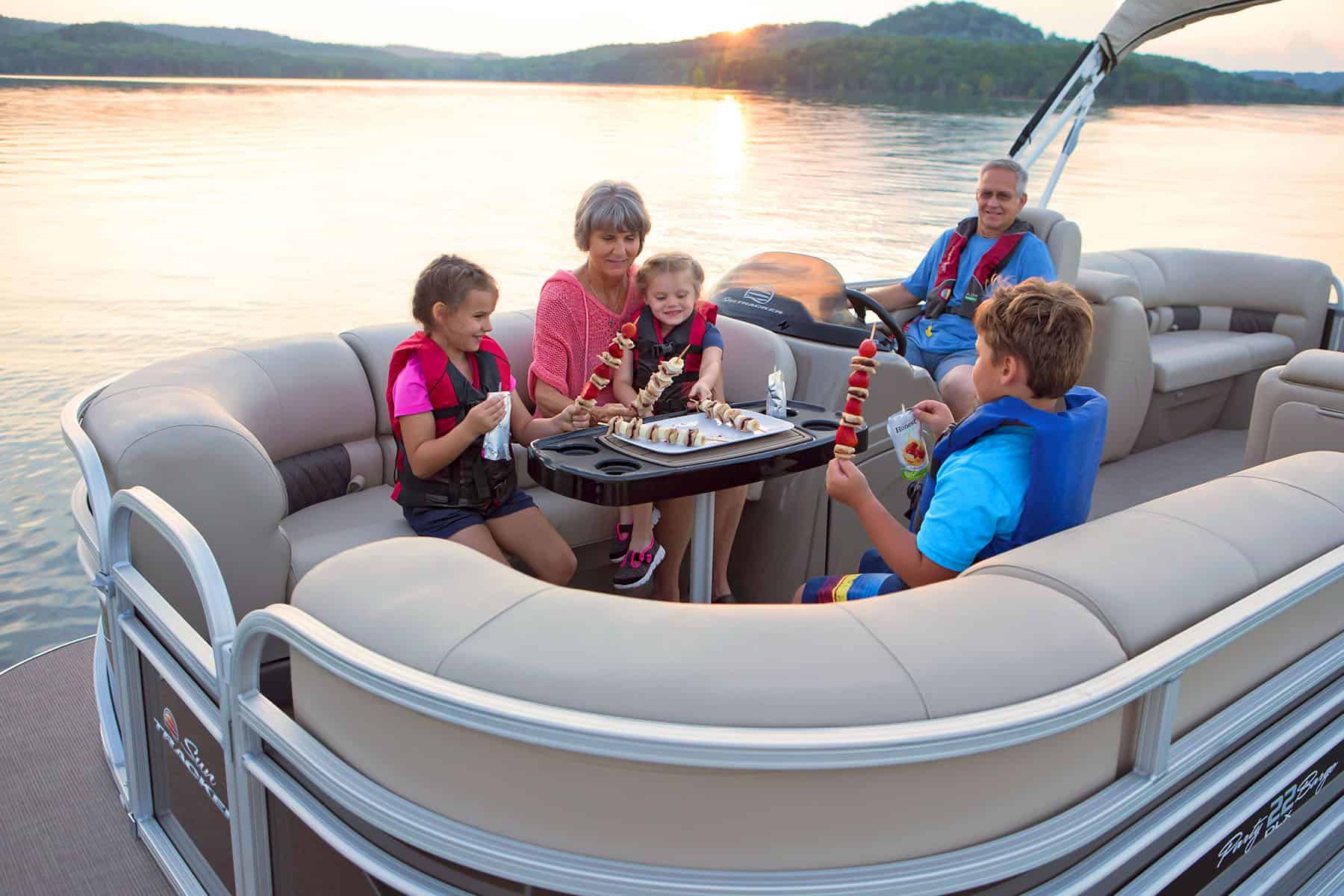
When you buy a pontoon boat from the manufacturer, you have the option to mix and match layouts and modules. Every new feature adds to the price of your boat, but this approach allows extreme customization. Family pontoon boats might have kid-sized seats as a start.
The deck is generally flat, with no steps up or down. This makes the boat ideal for seniors and passengers that are differently abled, e.g. walkers, wheelchairs, or crutches. You can install a changing station for diapers, or a covered cabin for teen sleepovers and campouts.
10. Arch Pontoon Boats
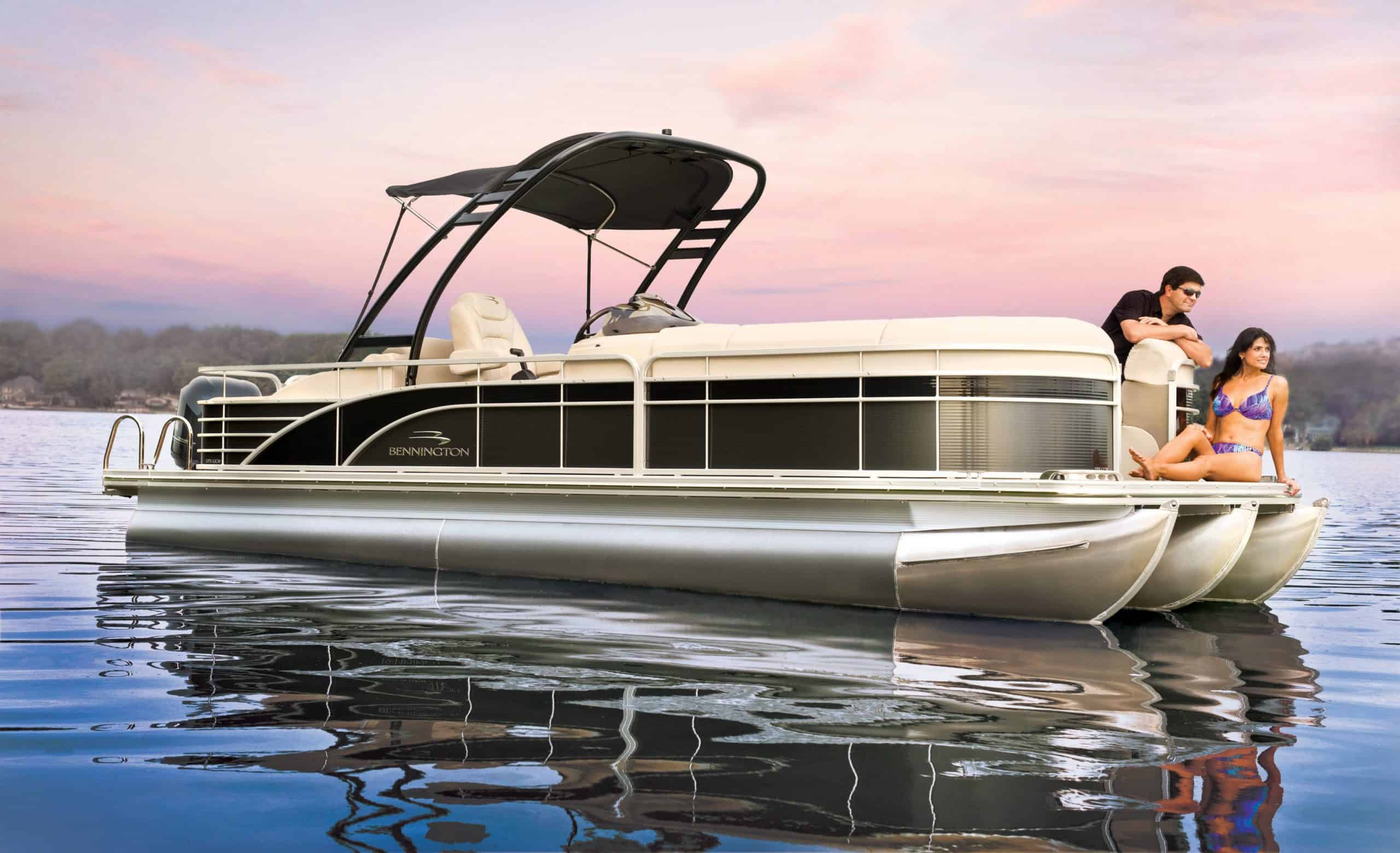
Pontoon boats have a distinct silhouette, with those tubes underneath and the fence that surrounds the seating section. But if you want to add a touch of style to your boat, get one that has an overhead arch. Plus, it serves as a handy anchor for boat covers and towing lines.
If you like to entertain on your boat, the arch is also a convenient surface for mounting speakers and lights. And you can use it as a marker for your dance floor or yoga spot. The only downside if the arch can limit the boat’s headroom, particularly if you’re over 6 feet.
11. Luxury Pontoon Boats
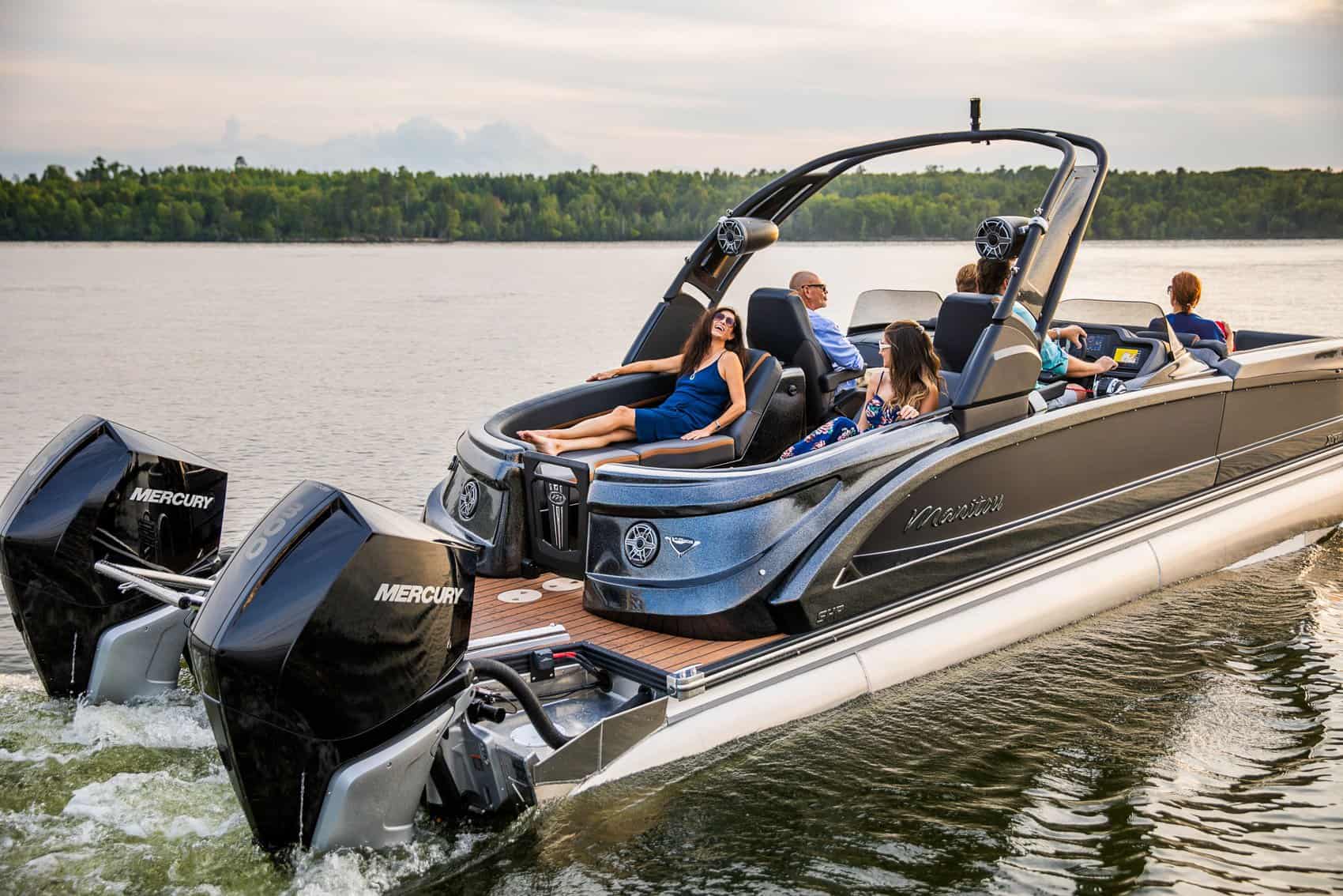
The frame of a pontoon boat is a standard rectangle. So when you’re upgrading from a fishing trawler to a luxury pontoon, the key difference is in the finishing. You can add all sorts of bells and whistles to your premium pontoon boat. This may include loungers.
These reclining seats need more space than regular chairs, so you can only mount them when you have limited passengers. Or if your boat is just for couples. You might even install a hot tub if your boat can take the weight. High-end upholstery is a must and a powerful engine.
12. High-Performance Pontoon Boats
For the most part, pontoon boats are driven slow and steady. They let you soak in the sights and enjoy that salty spray. Also, because their design is bulky, they’re not intended for fast turns and tricky maneuvers. But lately, pontoon races have become a popular watersport.
High-performance pontoons aka ‘rocketoons’ are the top choice here. They’re often tritoons, sometimes with an engine in each tube. The current record for the world’s fastest pontoon boat is 114mph, set by Brad Rowland in 2013, piloting a South Bay 925CR Pontoon Boat.
13. Fibreglass Pontoon Boats
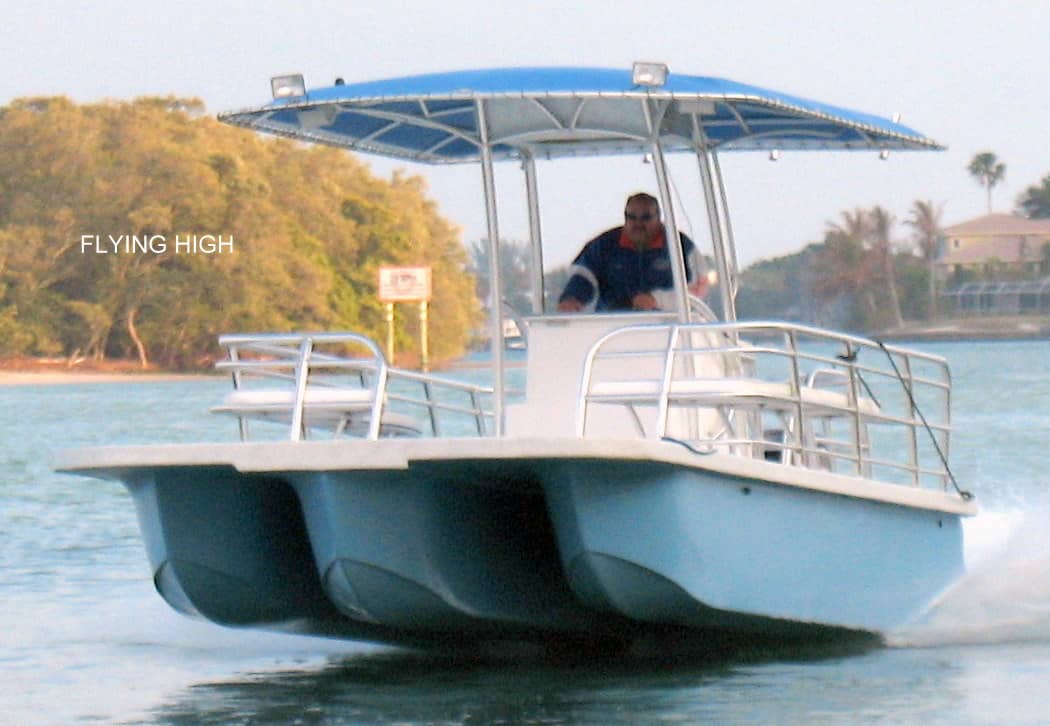
Pontoon boats sit on logs, tubes, or cylinders made of hollow, lightweight aluminum. And sometimes, the rest of the boat is made of waterproof (marine) plywood and polyethylene. But if your chassis can handle the extra mass, you could opt for a fiberglass pontoon body.
The fence, floor platform, and outer shell would be molded from fiberglass, which is heavier and more versatile than metal. It lets you introduce colors and designs to your pontoon. But it’s a lot more expensive – because the shell is pricy and your boat will need a larger engine.
14. Pontoon Boat House
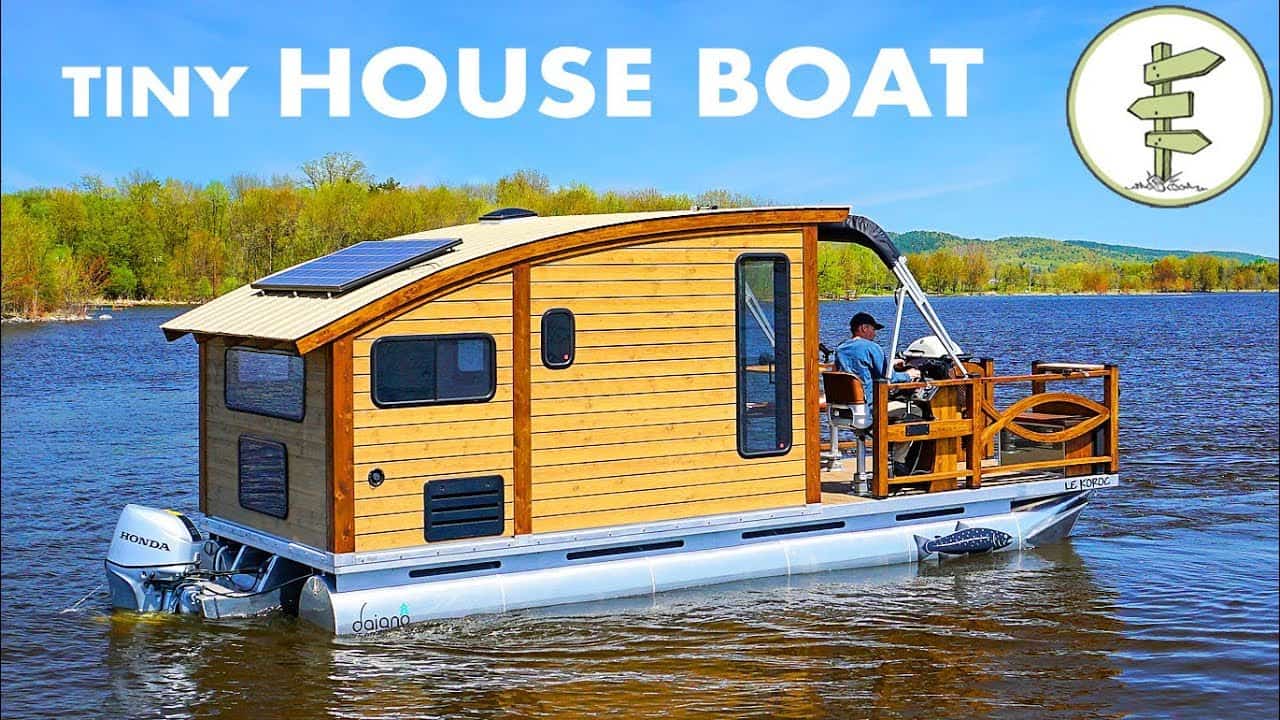
Pontoon boats don’t generally have sleeper cabins, though you can fit the boat with daybeds and recliners for resting and tannin. But if you want a boat to live in, you can buy an 8-foot houseboat (or boat house) with a hollow hull of pontoon tubes and a clever floor plan above.
It has to be a light house though, pun intended, so be careful in your choice of furnishings. And it has to have the right connectors, specs, and fixtures for your parking point. Tiny House furniture would probably work well. And you might need something for mosquitoes!
15. Double Deckers and Triple Deckers
The most important feature of any pontoon boat is lightweight construction. Even if it has a motor, the boat stays afloat through buoyancy, so weighing it down won’t end well. For this reason, double-decker and triple-decker pontoons tend to have a smaller upper platform.
That upper floor can host seating space, but they’re more likely to be folding chairs or inflatable seats. But the upper floor is great for slides and viewports, and it needs a smaller floor plan. That said, these boats do require tougher engines to keep up with the extra mass.
16. Saltwater Pontoon Boats
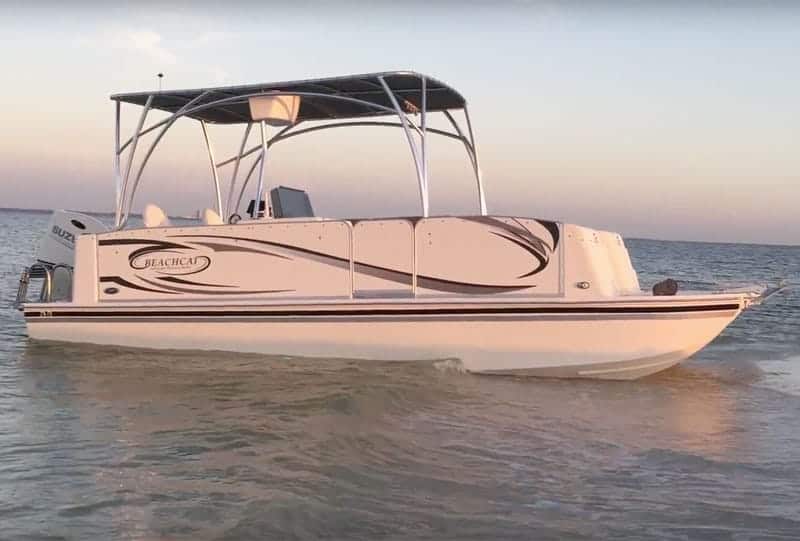
The best feature of a pontoon boat is its shallow draft. It can anchor, sail, and float in as little as 12 inches of water. So it’s largely restricted to lakes, wide rivers, and shallow bays. And it doesn’t do as well on seas and oceans because it easily banks amid rough waves and currents.
But the bigger issue is the material. Aluminum and plastic might be damaged by the corrosive action of salt and sand. So if you plan to sail your pontoon boat offshore, buy a marine-grade version that can withstand saline damage. Zinc and fiberglass are perfect.
17. Ferry Pontoon Boats
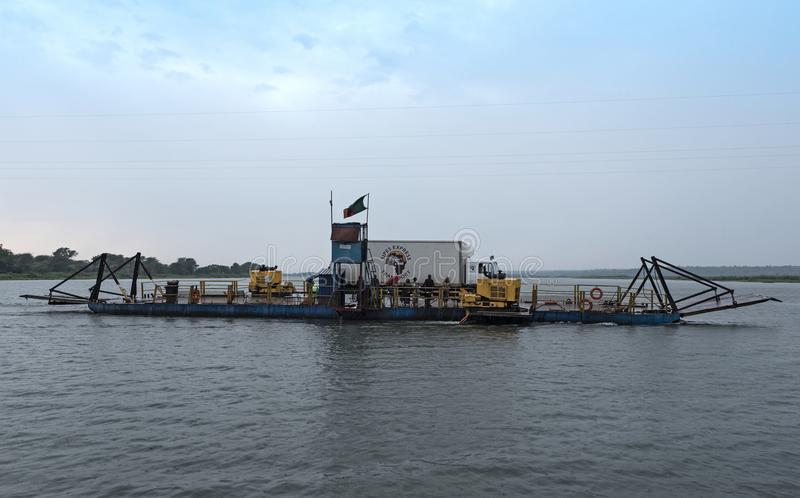
Ferries are large boats that carry commuters across short distances. They’re often public transport vehicles, so think of it as a water bus. Ferries are common in island communities where workers have to go mainland for work. And these ferries can run several times a day.
Pontoon boats are a popular choice for commercial ferries. They don’t need speed, and they can navigate shallow island docks. These ferries often have minimal seating with lots of standing room and guardrails. This way, they hold more passengers, but balance is tricky.
18. Sight-Seeing Pontoon Boats
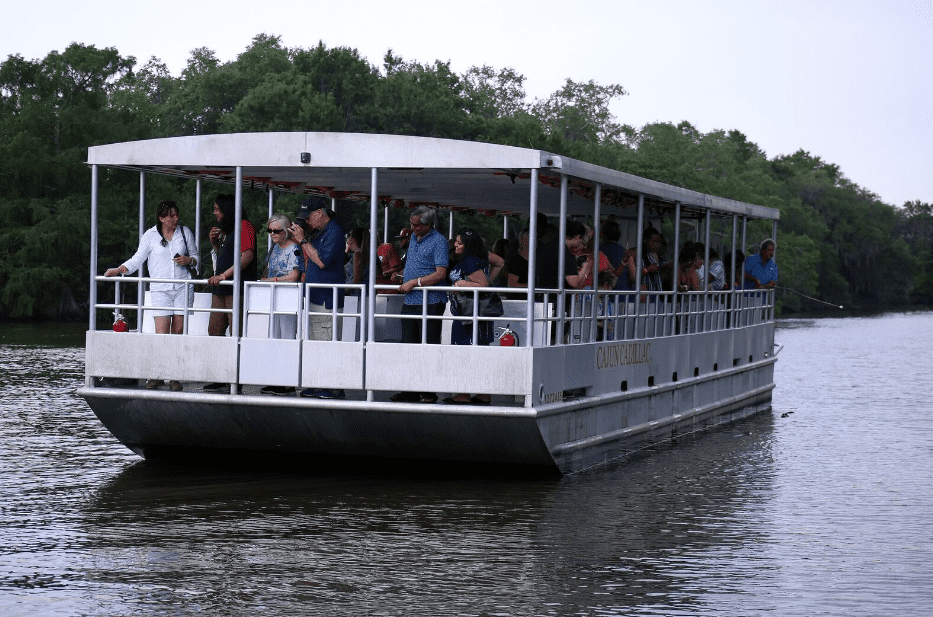
Sight-seeing pontoon boats are quite similar to ferries because the emphasis is on loading as many people as possible. But while ferry rides are about convenience and practicality, tour boats focus on luxury and visibility. The seats are lined along the sides of the pontoon boat.
The tourist pontoon might have a cover for weather protection, but these will have windows. And the boat is carefully balanced so that when guests rush to one side to look at something interesting, they don’t end up capsizing the boat! Tour pontoons have lots of lockers as well.
19. Pedal Pontoon Boats
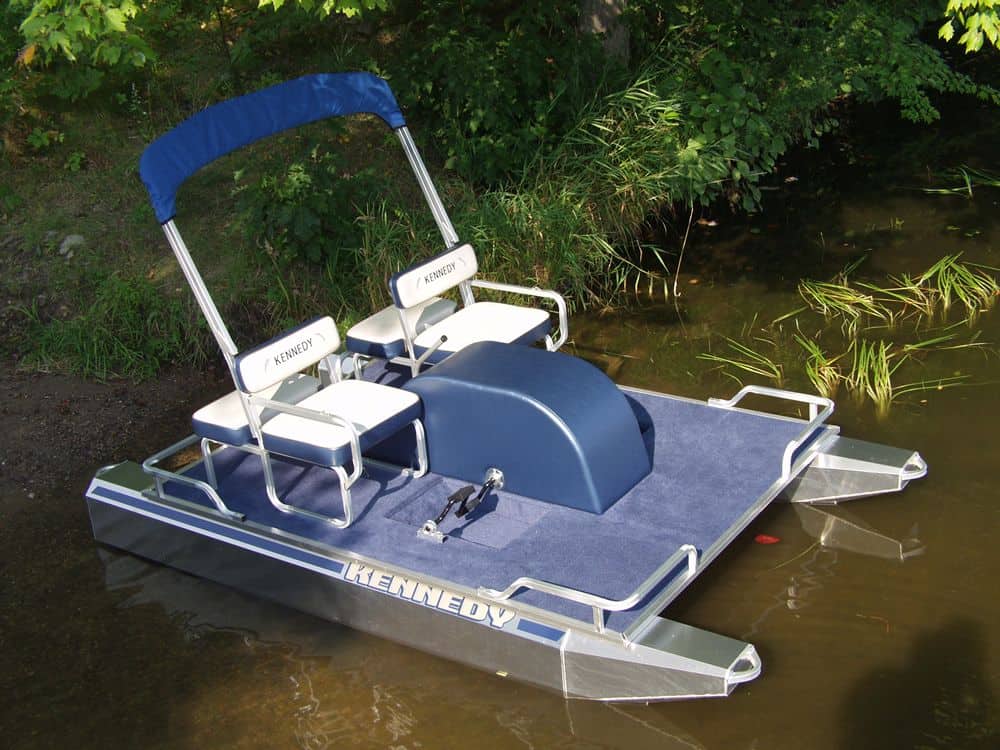
Pedal boats are leisure crafts that can hold one, two, or even four people. Think of it as an aquatic tandem bike. These pedal boats can be as small as 8 feet, and they move using pedals, just like a bicycle. You might see them described as paddle boats or aqua cycles.
Because these paddle pontoons are manual, you don’t expect to be in them very long. So the seats won’t be as heavily padded, and the boat feels more airy and open. These boats are good for solo fishing, sightseeing, or light exercise for waterfront dwellers – it beats biking!
Basics Features of Pontoon Boats
We’ve looked at several types of pontoon boats, so here are some basic pontoon facts:
They’re modular so you can choose from diverse designs, layouts, and floor plans.
The tubes are most often made of aluminum.
Pontoon boats routinely have a marine plywood deck.
The outer body can be aluminum or fiberglass.
Seating is typically plastic or fiberglass with luxurious cushioning.
Modern pontoon boats have close to 1000hp with top speeds over 60mph.
Contemporary pontoon boats are better at sharp turns and rough waves.
Do you know of any pontoon boat types we haven’t mentioned? Tell us in the comments!
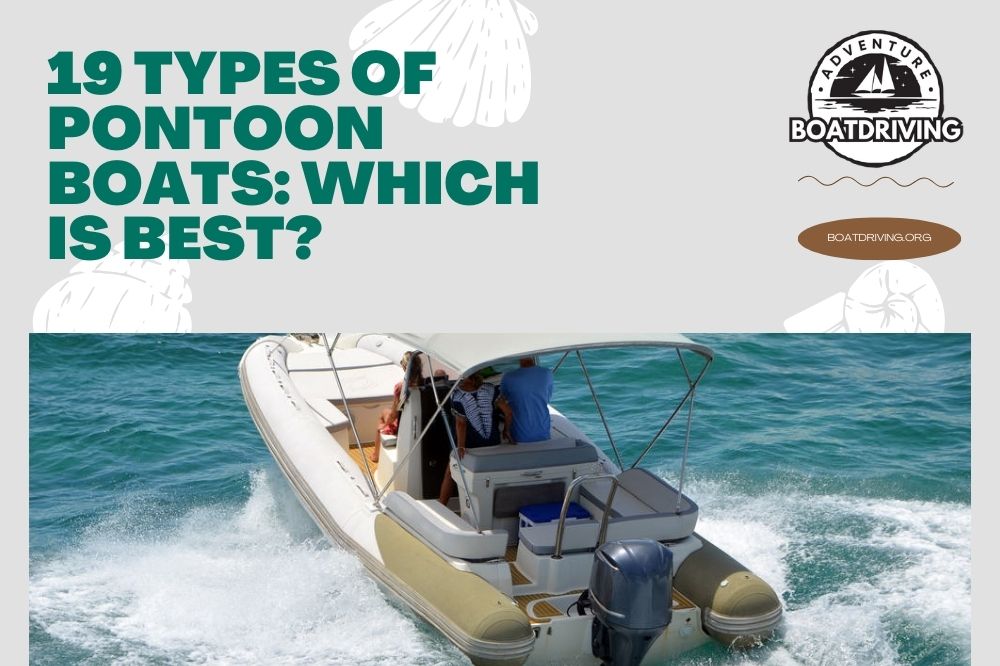
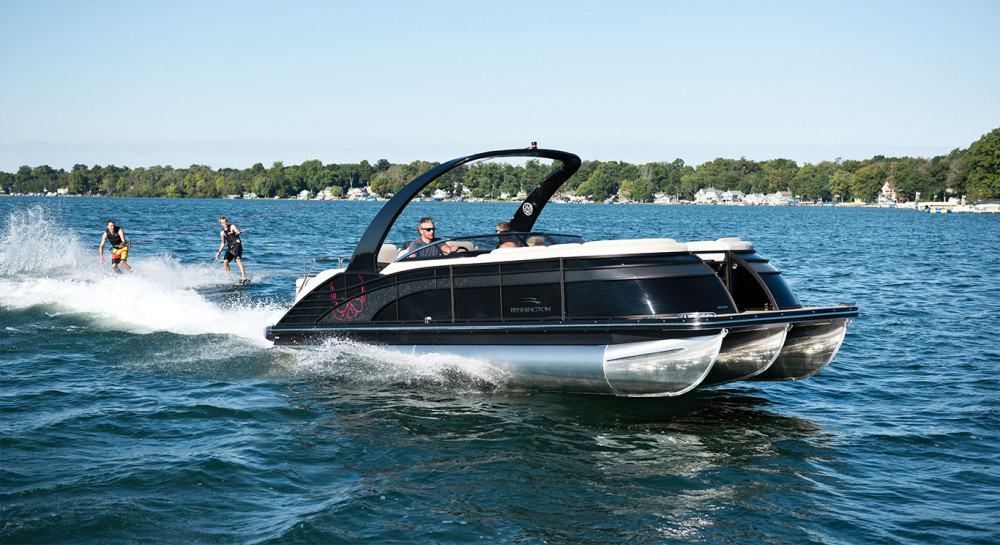
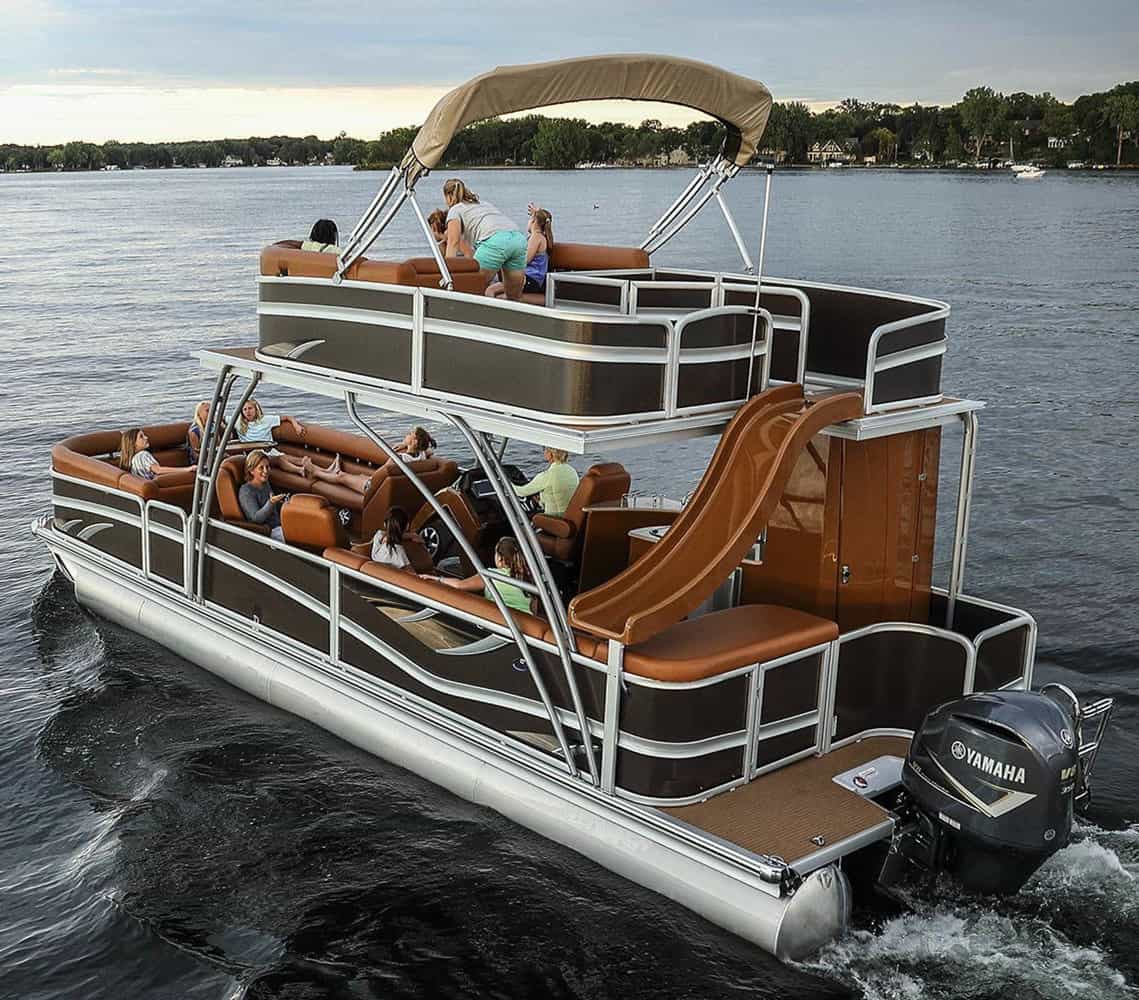
Is there a manufacturer that makes a pontoon boat model with a recessed deck (down between the pontoons for overall reduced profile/height?